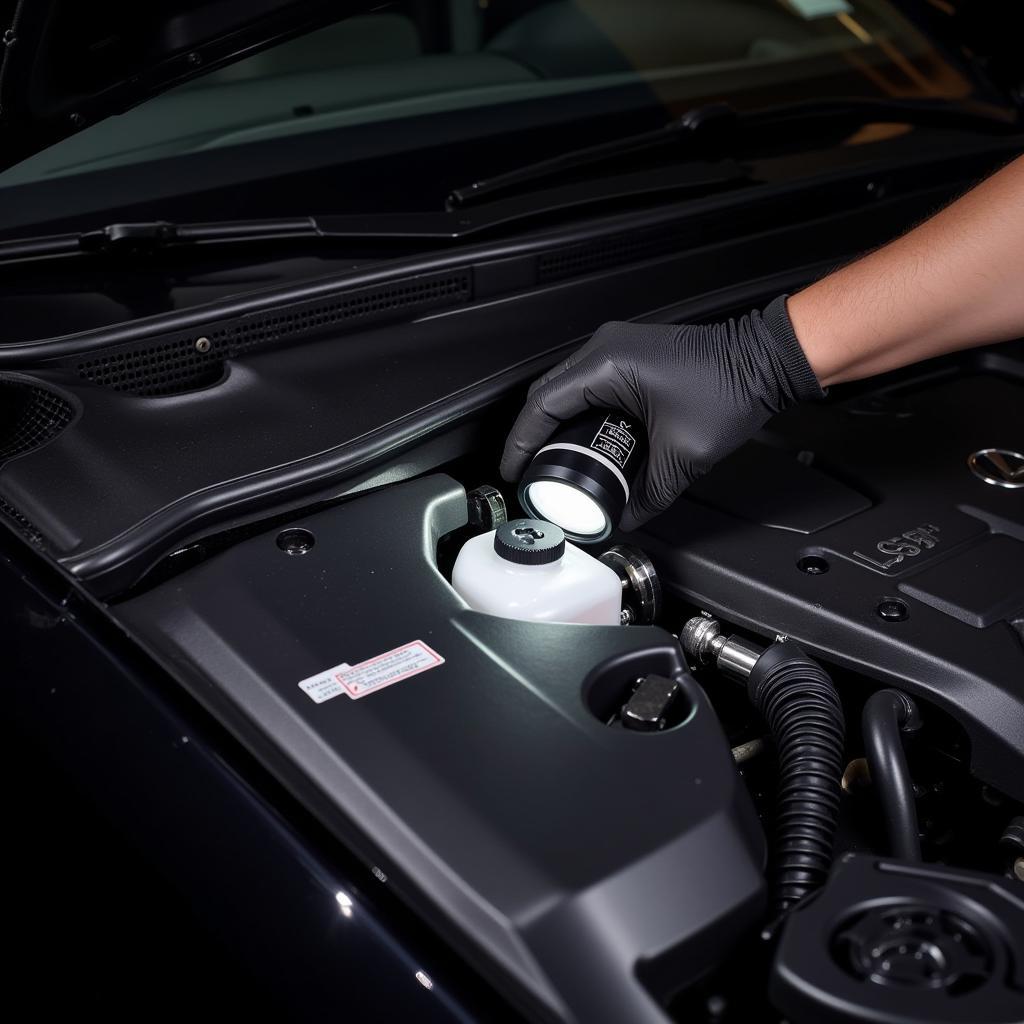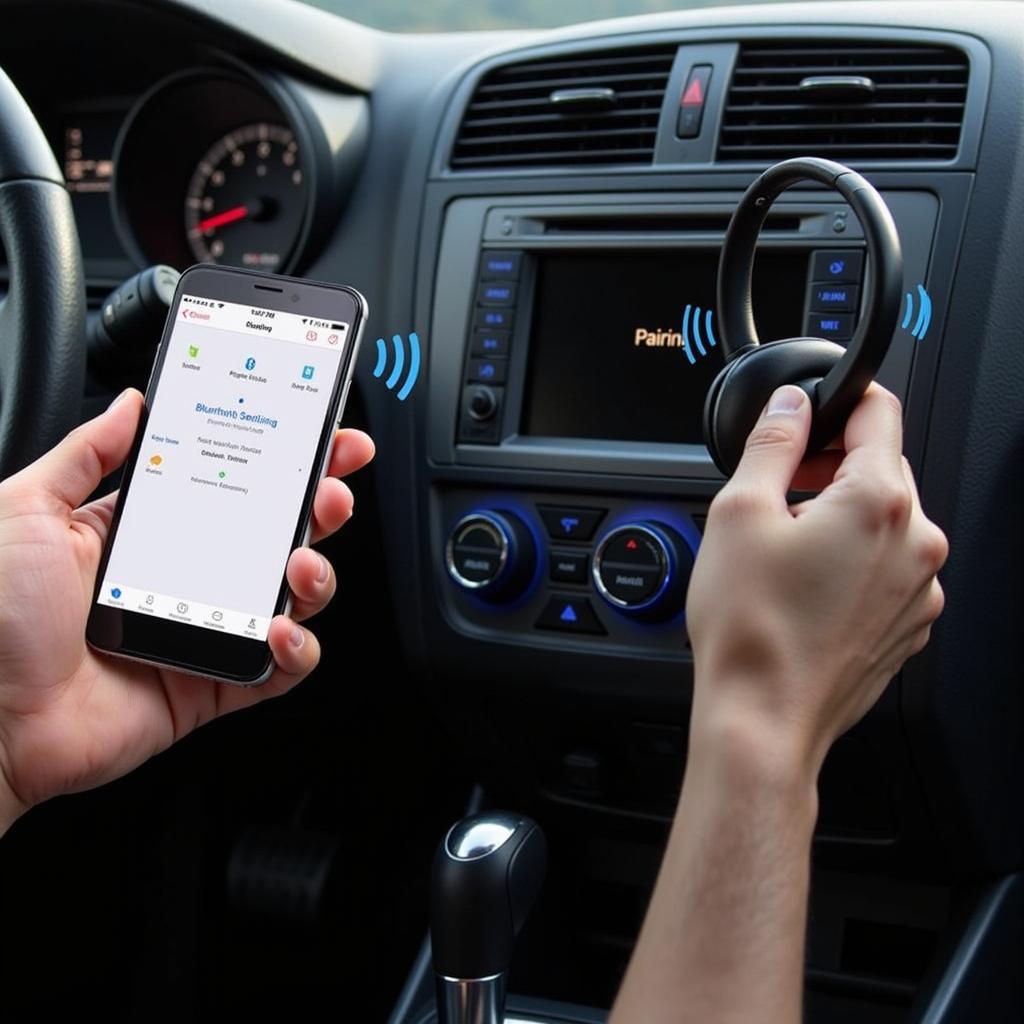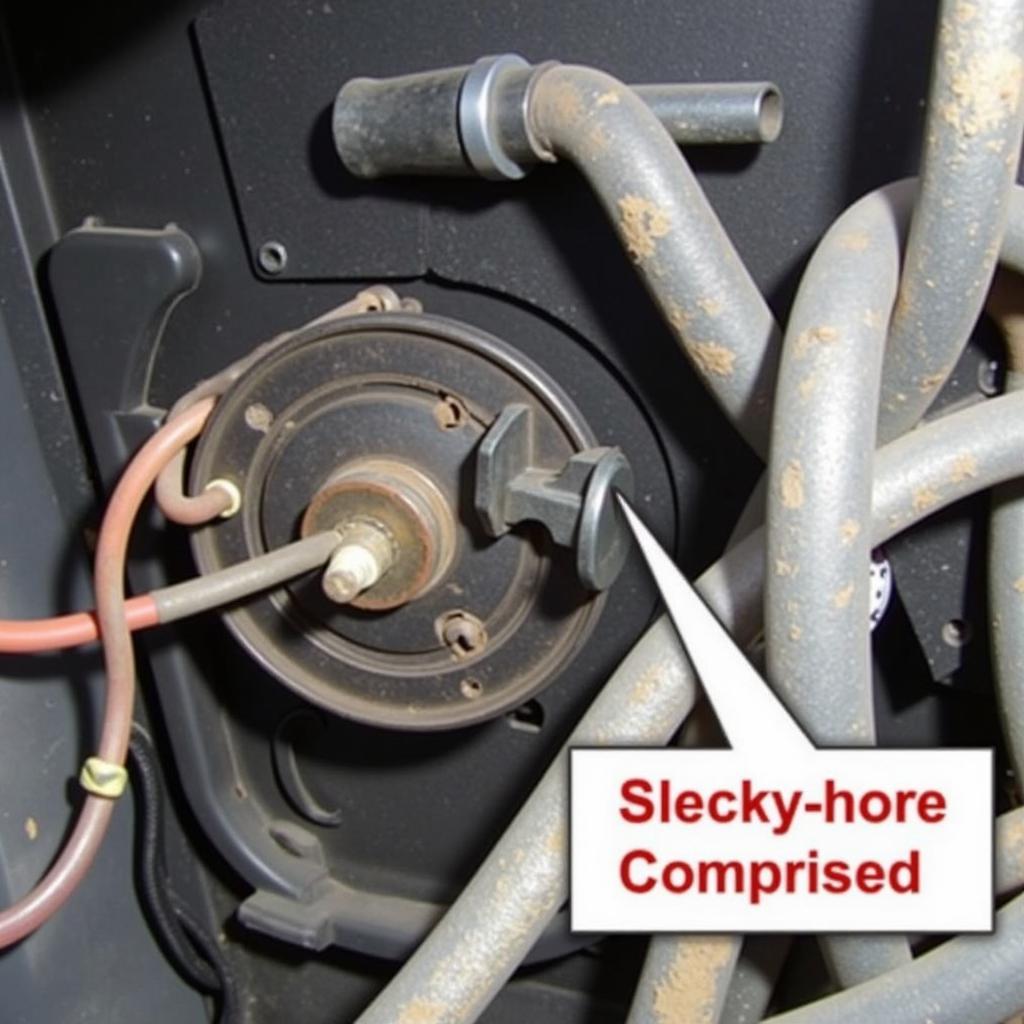The dreaded GS300 rear brake warning light can be a real headache. Whether it’s a steady glow or an intermittent flicker, this light signals a potential issue with your Lexus GS300’s braking system that demands attention. This article will guide you through the common causes of a gs300 rear brake warning light, troubleshooting steps, and potential solutions, empowering you to address this problem effectively.
Understanding the GS300 Rear Brake Warning Light
The rear brake warning light is part of your car’s safety system, designed to alert you to potential problems with the brakes. It can illuminate for several reasons, ranging from simple issues like low brake fluid to more complex problems with the braking system components. Ignoring this warning light could lead to compromised braking performance and potential safety hazards.
Common Causes of a GS300 Rear Brake Warning Light
Several factors can trigger the rear brake warning light in your GS300. Here are the most common culprits:
- Low Brake Fluid: This is often the most straightforward cause. Low brake fluid can indicate a leak in the system or worn brake pads.
- Worn Brake Pads: As your brake pads wear down, the brake fluid level drops. The warning light serves as a reminder to replace the pads.
- Faulty Brake Light Switch: The brake light switch activates the brake lights when you press the brake pedal. A malfunctioning switch can cause the warning light to illuminate.
- ABS Issues: Problems with the Anti-lock Braking System (ABS) can also trigger the warning light. This may require professional diagnosis and repair.
- Parking Brake Engaged: If the parking brake is not fully released, the warning light may stay on.
 Checking Brake Fluid Level in a Lexus GS300
Checking Brake Fluid Level in a Lexus GS300
Troubleshooting the GS300 Rear Brake Warning Light
Before rushing to a mechanic, you can perform some basic troubleshooting steps:
- Check the Parking Brake: Ensure the parking brake is fully disengaged.
- Inspect Brake Fluid Level: Check the brake fluid reservoir. If the level is low, top it off with the correct type of brake fluid specified in your owner’s manual.
- Examine Brake Pads: Visually inspect the brake pads through the wheel spokes. If they appear thin, they likely need replacement.
When to Seek Professional Help
If the warning light persists after performing the initial troubleshooting steps, it’s crucial to seek professional assistance. A qualified mechanic can diagnose the issue using specialized equipment and perform the necessary repairs. Ignoring a persistent warning light can lead to more significant problems and potentially dangerous driving conditions.
“Regular brake maintenance is essential for safety,” says Michael Carter, ASE Certified Master Technician. “Addressing the rear brake warning light promptly can prevent costly repairs down the road.”
Remote Diagnostics and Software Solutions
In some cases, remote diagnostics and software programming can be used to identify and resolve issues related to the rear brake warning light, particularly if the problem stems from the ABS or other electronic components. This involves connecting your GS300 to a diagnostic tool remotely, allowing a technician to analyze the data and potentially reprogram certain modules.
Conclusion
The gs300 rear brake warning light is a critical safety indicator that should never be ignored. By understanding the potential causes and following the troubleshooting steps outlined in this article, you can address the issue effectively. However, if the problem persists, seeking professional help is crucial to ensure your safety and the proper functioning of your vehicle. Remember, regular brake maintenance is key to preventing future issues and maintaining optimal driving conditions.
FAQ
- What does the GS300 rear brake warning light mean? It indicates a potential problem with your braking system, such as low brake fluid or worn brake pads.
- Can I drive with the rear brake warning light on? It’s not recommended. Driving with a brake issue can be dangerous.
- How do I check my brake fluid level? Locate the brake fluid reservoir in the engine bay and check the fluid level against the minimum and maximum markings.
- How often should I replace my brake pads? It depends on driving habits and conditions, but generally every 25,000 to 70,000 miles.
- What is remote diagnostics? It involves connecting your car to a diagnostic tool remotely to analyze data and identify potential issues.
- Can remote diagnostics fix my brake light issue? In some cases, yes, especially if the problem is related to software or electronic components.
- What should I do if the warning light stays on after adding brake fluid? Consult a qualified mechanic for further diagnosis and repair.
“Addressing brake issues proactively saves you time, money, and most importantly, ensures your safety on the road,” adds Sarah Miller, Automotive Safety Expert.



